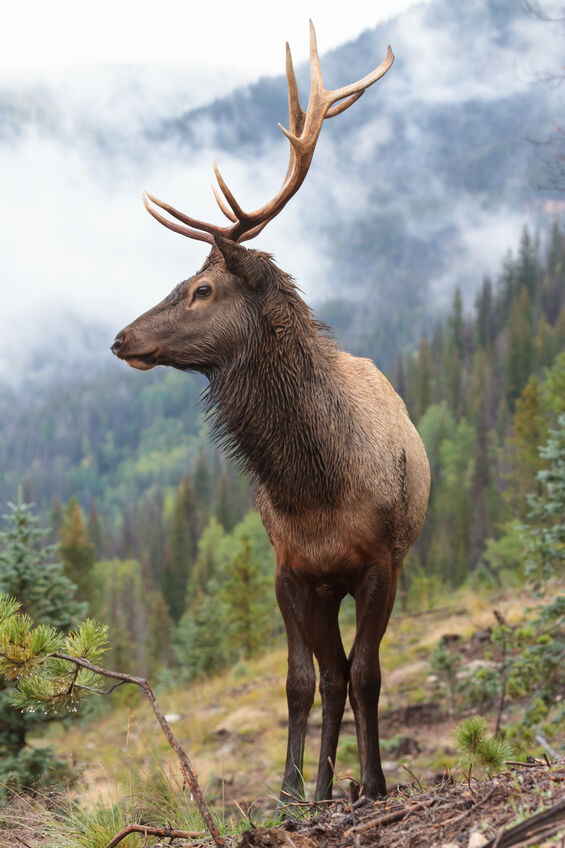Samuelson Outfitters is known for guided elk hunts in the Medicine Bow-Routt National Forests via Troublesome Basin. This location, in the central Rocky Mountains, is one of the best places in the USA to find elk– it’s untouched wilderness where elk thrive.
An Overview of Elk Behavior

How much do you know about elk behavior? They are herd animals and thrive in forests, where they learn to adapt to their environment. Normally, elk feed in the morning and/or at night before the sun goes down. They tend to graze on grasses, plants and bark. During the day, they’re likely to “hide out” among dark timber, digesting their morning meal while conserving energy.
Do elk migrate? Yes. They will migrate for both comfort and food purposes. When it’s summertime and temperatures are hot, elk will usually seek higher elevations in the mountains because they like cooler temperatures. Conversely, in the winter, they’ll end up at lower elevations where it’s warmer and more food sources are available.
In the early fall months, it’s “the rut” season. This is where male bulls seek out female cows to join their harem. Yes, it’s true– elk have harems! A bull likes to have several females around to mate with, and travel with, too. “He” might have more than a dozen girls in his harem. A bull protects his girls– he doesn’t let other bulls take advantage!
Here’s where it gets interesting. Males will dig holes, lay in them and pee in them. These holes are called wallows. Males use these holes to cover themselves with their own sexual odor so females can easily find them.
Bulls “bugle” during the rut– this is a vocalization to either attract females or let other males know they’re in the vicinity and “don’t mess with me and my harem.” You can read more about the different types of bull elk bugles online. Suffice it to say that some vocalizations are just to signal their location, while others are meant to intimidate or to round up girls of the harem. By the way, female elk (cows) also vocalize, using their calls for various reasons.
Curious to hear elk sounds in the wild? Want to hunt elk? Call Samuelson Outfitters at 970-726-8221 for more info about guided elk hunts in Colorado.
